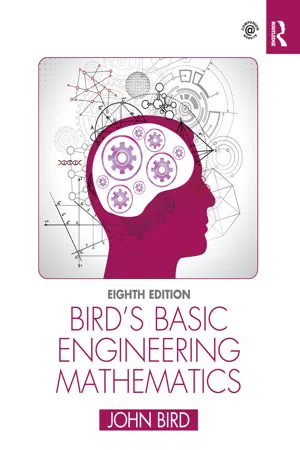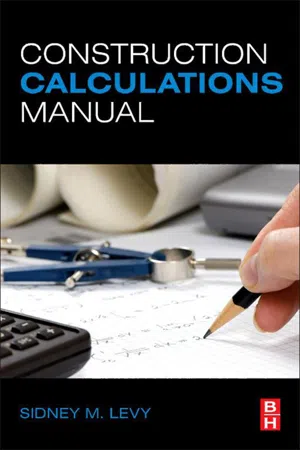Mathematics
Surface Area of Cone
The surface area of a cone is the total area of all its surfaces, including the base and the curved side. It is calculated using the formula A = πr² + πrl, where A is the surface area, r is the radius of the base, l is the slant height, and π is a constant approximately equal to 3.14159.
Written by Perlego with AI-assistance
Related key terms
4 Key excerpts on "Surface Area of Cone"
- eBook - ePub
Conceptual Maths
Teaching 'about' (rather than just 'how to do') mathematics in schools
- Peter Mattock(Author)
- 2023(Publication Date)
- Crown House Publishing(Publisher)
rl. Again, though, it is important that pupils understand both parts of this formula and how they arrived at it, so that they can work with ‘open’ cones that have no base (such as cone-shaped water cups), and pupils should be offered the opportunity to work with both closed and open cones and find their surface area.A nice opportunity to include when looking at Surface Area of Cones and cylinders is the use of factorisation to rewrite the formulae in different ways. For a closed cylinder the formula can be factorised to give 2πr(r + h); a cylinder only closed at one end can have it surface area formula written as πr(r + 2h) and the closed cone surface area formula can be written as πr(r + L). What I particularly like to do is to offer these formulae pre-factorised (once pupils are familiar with their expanded forms) and ask them to identify which shape each formula will provide the surface area for. 386From cones the natural place to move on to is to consider spheres. However, this is where the net of the shape will start becoming less useful in providing insight into how we might calculate the surface area:As we can see, the area of the net is not particularly easy to calculate (or even to see how we might calculate) and so we are going to have to approach the sphere differently. Personally, I would still show this to pupils, so that they can appreciate that our previous approaches involving finding the area of nets will not be applicable in this case. - eBook - ePub
- W Bolton(Author)
- 2012(Publication Date)
- Routledge(Publisher)
rl. Thus:Figure 2.20 Area of curved surfaceSurface Area of Cone = πrlExample A right cone has a base radius of 100 mm and a perpendicular height of 150 mm. Determine the volume of the cone and the area of its curved surface.RevisionVolume = πr2 h = π × 1002 × 150 = 1.57 × 106 mm3The slant height l of the cone (Figure 2.21 ) is given by the Pythagoras theorem as:Figure 2.21 ExampleSurface area = πrl = π × 100 × 180 = 5.65 × 104 mm28 Determine the volume and total surface area of a pyramid with (a) a square base of side 60 mm and a perpendicular height of 100 mm, (b) a rectangular base 7.0 m by 4.0 m and height 10.0 m.2.3.4 Frusta of pyramids
The frustum of pyramid is the portion cut off between the base and a plane parallel to it; it is sometimes called a truncated pyramid. Figure 2.22 illustrates this for a square-based pyramid with the frustum cutting off an upper pyramid from the original pyramid of vertical height H to leave a height h. Let A be the base area of the original pyramid and a the area of the cut surface. The areas are equal to the squares of the lengths of the corresponding sides, hence:Figure 2.22 Frustum of a pyramidSince the sides are formed by the intersection of parallel planes with the triangular sides of the original pyramid, we have (ab)/(AB) = (H - h)/H. Thus:and we can write:where k is a constant. The volume V - eBook - ePub
- John Bird(Author)
- 2021(Publication Date)
- Routledge(Publisher)
28.25, Figure 28.25 and r = 5.0 cm, R = 10.0 cm l = [ 25.0 2 + 5.0 2 ] = 25.50 cm from Pythagoras’ theorem. Hence, curved surface area = π (25.50) (10.0 + 5.0) = 1201.7 cm 2 i.e. the area of material needed to form the lampshade is 1 2 0 0 c m 2, correct to 3 significant figures. Problem 29. A cooling tower is in the form of a cylinder surmounted by a frustum of a cone, as shown in Fig. 28.26. Determine the volume of air space in the tower if 40 % of the space is used for pipes and other structures Figure 28.26 Volume of cylindrical portion = π r 2 h = π (25.0 2) 2 (12.0) = 5890 m 3 Volume of frustum of cone = 1 3 π h (R 2 + R r + r 2) where h = 30.0 − 12.0 = 18.0 m R = 25.0 ÷ 2 = 12.5 m and r = 12.0 ÷ 2 = 6.0 m Hence, volume of frustum of. cone = 1 3 π (18.0) [ (12.5) 2 + (12.5) (6.0) + (6.0) 2 ] = 5038 m 3 Total volume of cooling tower = 5890 + 5038 = 10928 m 3 If 40 % of space is occupied then volume of air space = 0.6 × 10928 = 6 5 5 7 m 3 Now try the following Practice Exercise Practice Exercise 142 Volumes and surfaceareas of frusta of pyramids and cones (answers on page 456) 1. The radii of the faces of a frustum of a conical paper weight are 2.0 cm and 4.0 cm and the thickness of the frustum. is 5.0 cm. Determine its volume and total surface area. 2. A frustum of a wooden pyramid has square ends, the squares having sides 9.0 cm and 5.0 cm, respectively. Calculate the volume and total surface area of the frustum if the perpendicular distance between its ends is 8.0 cm. 3. A cooling tower is in the form of a frustum of a cone. The base has a diameter of 32.0 m, the top has a diameter of 14.0 m and the vertical height is 24.0 m. Calculate the volume of the tower and the curved surface area. 4. A loudspeaker diaphragm is in the form of a frustum of a cone - eBook - ePub
- Sidney M Levy(Author)
- 2011(Publication Date)
- Butterworth-Heinemann(Publisher)
If you take any circle, measure its circumference and its diameter, and divide the circle's circumference by its diameter, the answer is always 3.1416. This ratio of the circumference to the diameter is always the same, regardless of the size of the circle or its units of measure.Volume of a cylinder
volume = (pi / 4) × a2 × b and volume = pi × a/2 × a/2 × bVolume of a frustum of a pyramid
Volume of a cone
Volume of a frustum of a cone
Frustum's surface area
Tangent Examples: tangent 30° = 0.57735 tangent 35° = 0.70021 tangent 40° = 0.83910 tangent 45° = 1.00000 tangent 50° = 1.19175 tangent 55° = 1.42815 tangent 60° = 1.73205 tangent 65° = 2.14451 tangent 70° = 2.74748Volume of a sphere
Area of a circle
A circle's area can be determined by using either the radius or the diameterCircumference of a circle
Volume of a pyramid
3.2.1 Volume of Prisms
Right Prism Volume Postulate
The volume V of any right prism is the product of B , the area of the base, and the height h of the prism.(The base's formula could change depending on the base's shape.)Formula:3.2.2 Volume of Pyramids
Pyramids
A pyramid is a polyhedron with a single base and lateral faces that are all triangular. All lateral edges of a pyramid meet at a single point, or vertex .Pyramid Volume Theorem
The volume V of any pyramid with height h and a base with area B is equal to one-third the product of the height and the area of the base.Formula:3.2.3 Area of Prisms and Right Area Prisms
There are special formulas that deal with prisms, but they only deal with right prisms. Right prisms
Learn about this page
Index pages curate the most relevant extracts from our library of academic textbooks. They’ve been created using an in-house natural language model (NLM), each adding context and meaning to key research topics.



